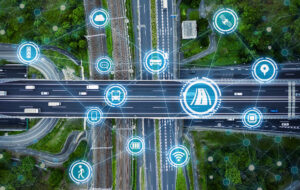by: Jonathan Cogwell & Rachel Bigelow
Introduction
The expansion and evolution of NB-IoT is positioning the technology as a key pillar in the future of many industries, representing a significant near-term investment priority. Verticals across the board now may benefit from the advent of NB-IoT devices and technology via adoption of private networking, driven by the global mobile cellular industry. In fact, the growth of NB-IoT, estimated at a CAGR (Compounded Annual Growth Rate) of between 35% and 61% up to 2025, is poised to only become further integrated into modern wireless technologies.
What Exactly is NB-IoT?
LTE NB-IoT technology is leading this revolution, as it is a part of new cellular standards that offers high credibility as a product of 3GPP standardization, low cost-structure, better coverage, and heightened security.
Building IoT devices through NB-IoT has become an effective way to save on power consumption, decrease the volume of high data storage, and set up in the most remote places on the earth. NB-IoT networks give the promise of connecting thousands of endpoints and devices under a single ecosystem, allowing for efficiencies in data acquisition and control.
NB-IoT Potential Applications
Today, you can already leverage NB-IoT for numerous industries. Despite the flexible nature of the applications, you will need partners with extensive interoperability experience, control systems, management of sensors, vendor communications infrastructure, software and hardware support, measurement tools, as well as access to suitable spectrum, in order to realize the fully benefits of the technology.
- Energy and Utilities
With NB-IoT devices, energy systems can be monitored safely with real-time data analysis. Smart gas and smart water metering can accurately manage and troubleshoot at a low cost, while sending alerts if a chemical leak is detected. Pressure, methane, and sewage levels are all components that can be monitored with a smart device, ensuring the safety and efficiency of standard processes. For utilities, these devices can do the same, such as detecting when there is a fault or outage, as well as substation monitoring of the system.
- Industrial Automation
NB-IoT is perfect to keep an eye on water and gas meters through small and regular data transmissions. Plus, it also offers broad network coverage in remote ruler areas and even underground cellars. NB-IoT can fill the connectivity gap for industrial automation. It means organizations will be able to save by reducing deployment, operational, and maintenance costs.
- Smart Cities
NB-IoT is the ideal technology to create and maintain smart cities in order to achieve optimal performance. For instance, NB-IoT provides better parking solutions by integrating existing infrastructure with sufficient parking sensors at an affordable cost and long-lasting battery life. Public or private streetlights can be turned on and off using custom scheduling, an effective method to reduce energy use. With NB-IoT, the waste management system can be transformed to cut back on significant amounts of energy using predictive software to find the most efficient routes and schedules to collect waste. The smart home market is growing at a rapid pace, with the potential to significantly reduce costs utilizing HVAC smart devices.

- Agriculture
NB-IoT provides an expansive cellular network as well as a sufficient battery life with minimized costs to cover large areas. Using common practices like geo-fencing allows you to track and monitor livestock remotely, notifying the user when livestock leaves a pre-defined area. Sensors in fixed remote locations can provide full insight by monitoring climate, pollution, and soil specifications while transmitting the data along with benchmarking and trend analysis directly to your device.
- Transportation
Another essential application of NB-IoT is vehicle tracking in real-time. Supply chain and logistics companies can leverage this application to decrease fraudulent activities in shipping containers, receiving notifications if something out of the ordinary occurs to the vehicle. Additionally, by using fuel consumption monitoring, finding the most energy efficient time and route can be found with the data analysis of an NB-IoT device. Organizations can view the data from multiple vehicles in real-time and install road sensors for better navigation, traffic analysis and prevent congestion.
Wrap Up
When organizations opt for licensed wireless networks, they can save their valuable resources and energy thanks to NB-IoT. You can expect more ubiquitous NB-IoT applications in the foreseeable future. In fact, applications of NB-IoT are already getting more specific to which technology organizations should use. In essence, it would be fair to say that the new wonder of technologies will further streamline the use of NB-IoT.
REFERENCES:
- https://accent-systems.com/blog/differences-nb-iot-lte-m/?v=d71bdd22c8bb
- https://www.iot-now.com/2020/07/06/103679-nb-iot-vs-lte-m-which-is-the-best-choice-for-your-iot-application/
- https://blog.semtech.com/title-10-things-about-lorawan-nb-iot
- https://www.vodafone.com.au/business/internet-of-things/narrowband
- https://www.mavoco.com/lte-m-vs-narrowband-iot-and-the-internet-of-things/
- https://www.sierrawireless.com/iot-blog/lte-m-vs-nb-iot/
- https://www.sierrawireless.com/iot-blog/industrial-iot-trends/
- https://www.iotforall.com/what-is-narrowband-iot
- https://blog.antenova.com/what-is-narrowband-iot-5-benefits-to-iot-devices
- https://www.link-labs.com/blog/5-top-business-benefits-of-narrowband-iot
- https://www.i-scoop.eu/internet-of-things-guide/lpwan/nb-iot-narrowband-iot/
- https://www.thalesgroup.com/en/markets/digital-identity-and-security/iot/resources/innovation-technology/nb-iot
- https://link.springer.com/article/10.1007/s41870-020-00469-x
- https://www.grandviewresearch.com/press-release/global-narrowband-nb-iot-market
- https://ksusentinel.com/2021/02/16/narrowband-iot-enterprise-application-market-to-grow-significantly-at-a-cagr-of-61-3-by-2026-vodafone-group-plc-att-inc-telstra-corporation-limited-etisalat-group/
